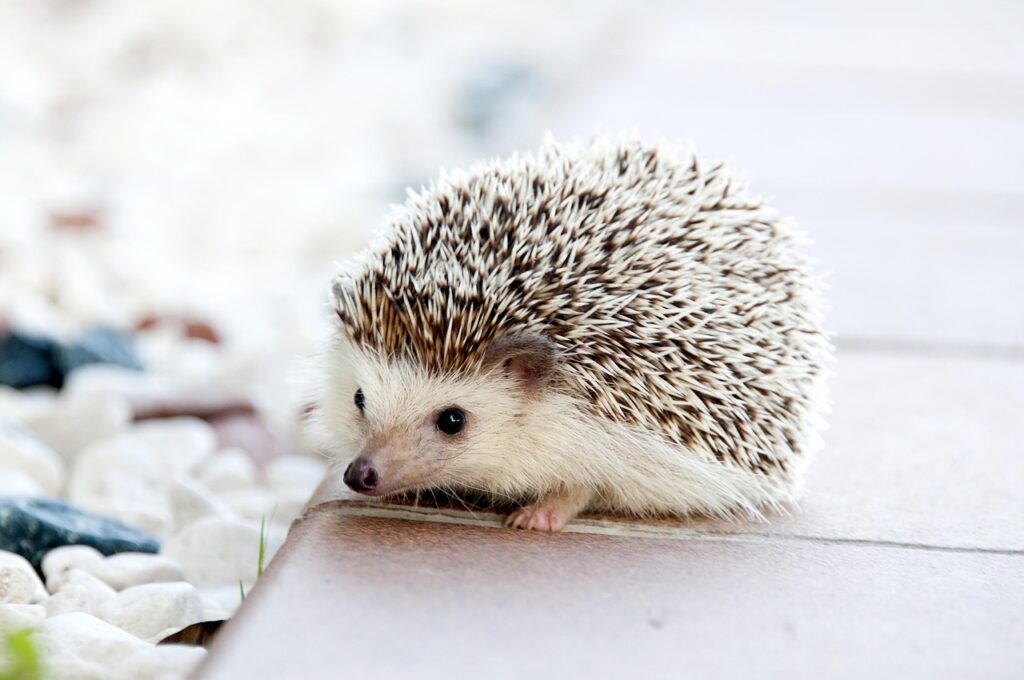Pets lovers often ask themselves – how can I make my home pet-friendly?
Transform your home into a pet-friendly haven with these expert tips! Discover how to create a safe, stylish, and comfortable space for your furry friends while maintaining a clean and functional living environment. Perfect for pet lovers!
If you’re a pet owner, your home isn’t just a space for you – it’s your furry (or scaly, or feathery) friend’s kingdom too. But making a home truly pet-friendly is about more than just providing food and water. It means creating a safe, comfortable, and stimulating environment for your pet while maintaining the style and functionality you love.
So, how can you make your home a pet haven? Let’s dive into some practical tips, ideas, and solutions to ensure your home is pet-friendly and still feels like home to you.
1. Think Safety First
Pets are curious by nature, and their explorations can sometimes lead to trouble. Ensuring your home is safe for them is the first step.
Secure Hazards
- Remove toxic plants: Many houseplants like lilies, pothos, or philodendrons can be toxic to pets. Swap them for pet-safe options like spider plants or Boston ferns.
- Store chemicals properly: Keep cleaning supplies, medications, and other toxic substances locked away or on high shelves out of reach.
- Cover cords and outlets: Chewing on electrical cords can be dangerous, so use cord covers or tuck cords away.
Pet-Proof Your Space
- Use baby gates or pet barriers to keep pets out of restricted areas.
- Secure trash cans with lids to prevent curious pets from digging in.
- Anchor heavy furniture or decor items that could tip over if your pet jumps or bumps into them.

2. Design a Comfortable Space
Every pet deserves a cozy corner to call their own. Tailor this space to suit their needs and personality.
Create a Pet Zone
- Comfortable bedding: Invest in a pet bed that’s supportive and washable. Consider the size and sleeping habits of your pet.
- A quiet retreat: For anxious pets, create a hideaway where they can relax during stressful events like thunderstorms or fireworks.
- Temperature control: Ensure their sleeping area isn’t too hot or cold. For reptiles or fish, check that their enclosures are properly heated or cooled.
Include Toys and Entertainment
- Rotating toys: Keep boredom at bay with a mix of chew toys, puzzle feeders, and interactive gadgets.
- Scratching posts for cats: Protect your furniture by giving your feline friends a dedicated place to scratch.
- Outdoor access: If possible, provide a safe outdoor area like a fenced yard or a balcony with pet-proof barriers.
3. Pet-Friendly Flooring and Furniture
Pets can be rough on surfaces, so choosing materials that can handle claws, fur, and accidents is key.
Flooring Tips
- Go for durability: Tile, laminate, or vinyl flooring are all great options for homes with pets. They’re easy to clean and scratch-resistant.
- Rugs with a purpose: Opt for low-pile, washable rugs and use rug pads to keep them in place.
- Avoid carpet if possible: Carpets can trap hair, stains, and odours, making them harder to maintain.
Furniture Choices
- Choose pet-proof fabrics: Leather, microfiber, or performance fabrics resist stains and scratches better.
- Use washable covers: Invest in slipcovers for sofas and chairs to make cleaning easier.
- Elevate fragile items: Keep delicate decorations or electronics on high shelves or behind glass doors.

4. Maintain Cleanliness Without Losing Your Mind
Living with pets doesn’t have to mean living in a mess. With a few smart strategies, you can keep your home fresh and clean.
Combat Pet Hair
- Regular grooming: The more fur you remove during grooming, the less ends up on your floors and furniture.
- Invest in tools: Use a high-quality vacuum designed for pet hair and a lint roller for quick clean-ups.
- Wash pet bedding frequently: Keeping their bedding clean reduces odours and allergens.
Handle Accidents Quickly
- Keep a pet-friendly cleaning kit handy with enzyme-based cleaners to tackle stains and odours immediately.
- Place mats under food and water bowls to catch spills.
- Train pets to use designated potty areas to minimise accidents indoors.
5. Incorporate Pet-Friendly Decor
Who says pet-friendly can’t be stylish? There are plenty of ways to integrate pet essentials into your home without sacrificing aesthetics.
Blend Pet Gear with Your Style
- Stylish pet furniture: Look for chic pet beds or litter box enclosures that complement your home decor.
- Custom storage: Use decorative baskets or bins to store toys, leashes, and other supplies.
- Wall-mounted solutions: Install floating shelves for cat perches or hooks for leashes and collars.
Colour Coordination
- Match pet items like beds or bowls to your home’s colour palette for a cohesive look.
- Opt for dark or patterned fabrics to hide stains or fur between cleanings.
6. Focus on Enrichment and Mental Stimulation
Pets need more than just physical comfort—they thrive on mental stimulation and play.
Indoor Activities
- Set up obstacle courses or play areas for your pets to explore.
- Hide treats around the house to encourage their natural hunting instincts.
Outdoor Adventures
- Take dogs on regular walks or trips to the park.
- Install a bird feeder outside a window for indoor cats to watch.
- Use a leash or harness for safe outdoor exploration with small pets like rabbits or ferrets.
- For seniors: Add ramps or soft bedding for easier mobility.

Budget for Maintenance
- Factor in the cost of replacing worn-out items like beds, toys, or scratching posts.
- Schedule regular vet visits to keep your pets healthy and happy.
7. Plan for Long-Term Pet Care
Creating a pet-friendly home is an ongoing effort. Think ahead to ensure your home grows with your pet’s changing needs.
Consider Their Life Stage
- For puppies or kittens: Focus on training areas and puppy-proofing.
- For seniors: Add ramps or soft bedding for easier mobility.
Budget for Maintenance
- Factor in the cost of replacing worn-out items like beds, toys, or scratching posts.
- Schedule regular vet visits to keep your pets healthy and happy.
8. Smart Home Technology for Pet Owners
The rise of smart home devices has made it easier than ever to care for pets, even when you’re not home.
Pet Cameras and Monitors
- Invest in pet cameras with two-way audio, so you can check in and talk to your pets when you’re away.
- Look for devices with treat dispensers for added engagement.
Automated Feeders and Water Dispensers
- Use smart feeders to schedule meals, ensuring your pets are fed on time.
- Install water fountains to encourage hydration, especially for cats who prefer running water.
Smart Cleaning Devices
- Robotic vacuums designed for pet hair can help keep floors clean without constant manual effort.
9. Create Pet-Friendly Outdoor Spaces
If you have a yard or garden, it can be a wonderful extension of your pet-friendly home.
Secure the Area
- Install secure fencing to keep your pets safe.
- Use pet-safe plants and avoid toxic ones like azaleas or tulips.
Outdoor Comfort
- Provide shaded areas for hot days and a warm shelter for cooler weather.
- Add a small wading pool for dogs to cool off in during the summer.
10. Consider Your Neighbours
A pet-friendly home isn’t just about what’s inside your walls – it’s also about being a considerate neighbour.
Noise Management
- Train your pets to minimise excessive barking or meowing.
- Use white noise machines or calming techniques to reduce anxiety-related noises.
Shared Spaces
- If you live in an apartment or shared housing, always clean up after your pet in communal areas.
- Respect rules about pets in shared spaces like gardens or lobbies.
Making your home pet-friendly requires both thoughtful planning and practical solutions. It’s not just about ensuring the safety of your furry companions but also maintaining harmony in your living space. To truly understand what works, let’s explore some real-life examples that illustrate effective strategies.
Real-Life Example: Cat Heaven in a Small Apartment
Take Sarah, a cat lover living in a small one-bedroom apartment. She wanted to ensure her cat, Whiskers, had enough space to play and feel comfortable. Sarah installed vertical cat trees and wall-mounted shelves to create a “cat highway” that didn’t take up floor space. This allowed Whiskers to climb, jump, and perch without cluttering Sarah’s home. She also placed a litter box inside a modified cabinet, ensuring both functionality and aesthetics.
Real-Life Example: Dog-Proofing an Open Concept Home
Jake and Emily, proud parents of a Labrador named Max, struggled with keeping their open-concept home tidy. They invested in a sturdy baby gate to section off areas where Max wasn’t allowed, like the kitchen during cooking. To address Max’s shedding, they purchased a dog grooming vacuum kit and made grooming sessions a regular bonding activity. By placing a non-slip mat near his water bowl, they also prevented spills and slippery floors.
Real-Life Example: Allergy-Friendly Pet Zones
Michael, who has mild allergies to pet dander, created pet-free zones in his home to maintain air quality. He installed air purifiers in common areas and chose washable slipcovers for his furniture. For his Golden Retriever, Bella, he dedicated a cozy corner with a washable bed and toys. This setup reduced dander spread while keeping Bella happy and comfortable.
Incorporating Technology
Incorporating technology can also make a significant difference in pet-proofing your home. For instance, smart pet cameras allow you to monitor your pets remotely, ensuring their safety and giving you peace of mind. Automatic feeders and water fountains ensure your pets are fed and hydrated on schedule, even when you’re not at home. These tools can simplify pet care and create a more manageable routine.
Tailored Storage Solutions
Pet accessories can quickly take over your home if not organized properly. Real-life pet owners have found success with dedicated storage solutions. Consider Jane, who built a custom storage bench near her entryway. It housed her dog’s leashes, toys, and grooming supplies while doubling as a seating area for putting on shoes. This not only kept the space tidy but also made outings with her dog seamless.
Outdoor Spaces
If you have a yard, transforming it into a pet-friendly oasis can greatly enhance your pet’s quality of life. A dog owner in Texas, Mark, installed a shaded area with cooling mats for his husky to beat the heat. He also fenced off a section with safe plants and installed a doggy splash pad for hot summer days. Cats, too, can enjoy the outdoors with secure “catio” setups that provide fresh air and a safe environment to explore.
By learning from these real-life examples, you can implement practical and effective pet-friendly solutions tailored to your unique home and lifestyle. Whether you live in a studio apartment or a sprawling house, there are always creative ways to make your space more accommodating for your beloved pets.
Final Thoughts
Making your home pet-friendly doesn’t have to be complicated or expensive. By focusing on safety, comfort, cleanliness, and enrichment, you can create a space where both you and your pet thrive. Remember, a pet-friendly home isn’t just about accommodating your animal companion – it’s about making them a true part of your family.
Start small with the changes that matter most to your pet, and enjoy the joy and companionship they bring into your life. After all, a happy pet equals a happy home!

